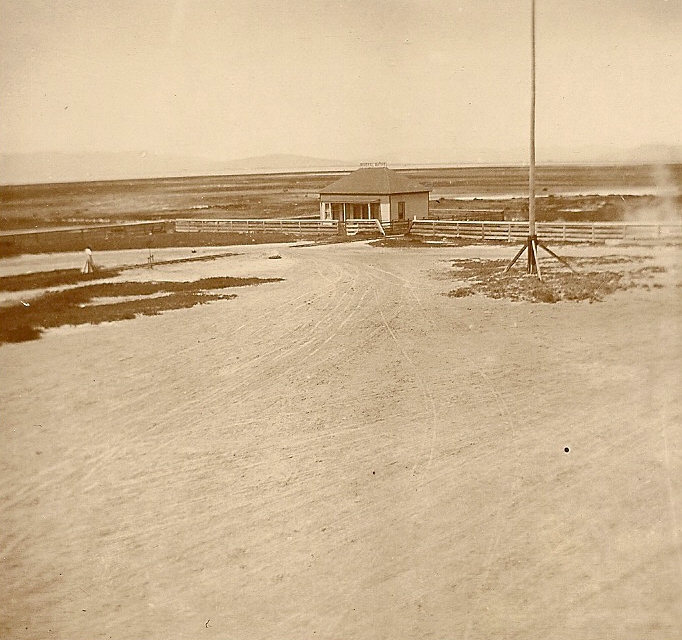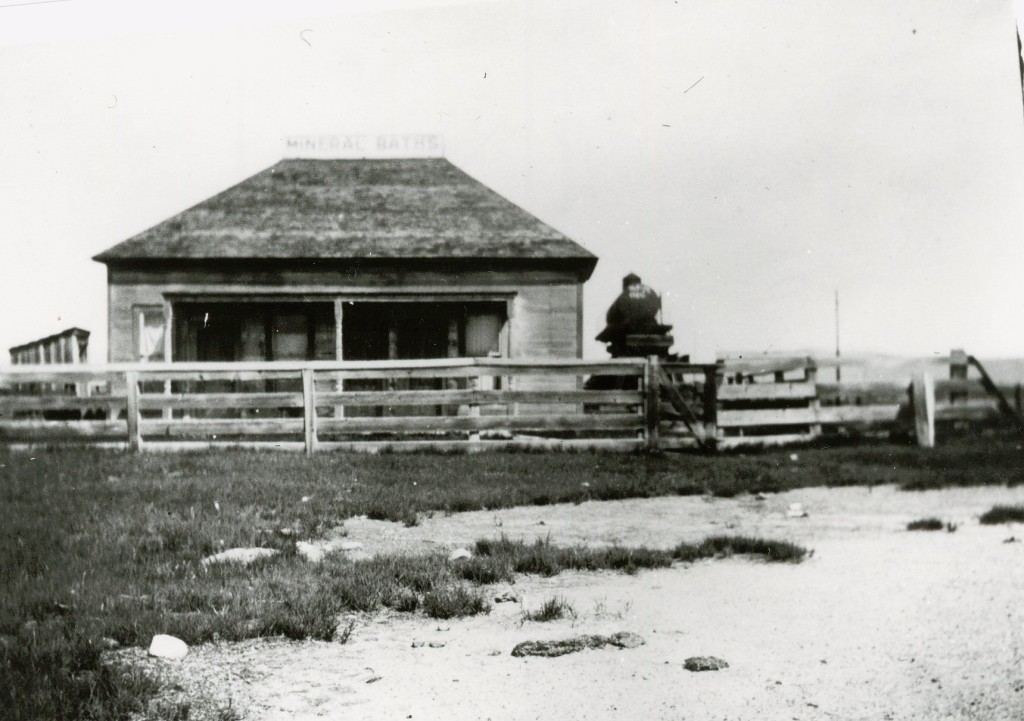
In the 1840s, Hudson Bay fur trappers referred to the Honey Lake Valley as Hot Springs Valley. This was due to hot springs on the east side of Honey Lake.
The springs were originally referred to as Upper and Lower Hot Springs. In the 1880s the Lower Hot Springs were also known as Brubeck Springs, for the owner of the property, L.W. Brubeck. The name was changed to Amedee with the establishment of the town. A unique feature of the springs was a geyser. In 1854, Lt. E.G. Beckwith, during his exploration of a transcontinental railroad route visited the hot springs and noted that the geyser consisted of a column of water twenty inches in diameter.
The hot springs came into prominence when NCO Railroad extended its line and established the town of Amedee. As previously mentioned, the geyser became quite an attraction when the town was established. Amos Lane, bartender and inventor, devised a clock to measure spurts of the geyser that rose and fell at intervals of 38 seconds. At times the geyser would shoot as high as eight feet. The geyser ceased to exist in May 1893, as the ground around the springs cracked and allowed the steam to escape. The town’s newspaper was aptly named the Amedee Geyser.
The springs were heralded for their curative properties and the first public bathhouse opened in 1892. In 1900, Arthur Holland appeared on the scene to transform Amedee into a health resort. Holland dubbed his enterprise the “Karlsbad of America,” a bold attempt to associate it with the famed Czech resort. Holland’s venture never materialized in the grandeur he desired and he abandoned the project within a years’ time. Yet, people would still come to Amedee for the specific purpose to take mineral bath. This practice continued through most of the 1930s.

In 1984, Matti Ripatti and California Hydro Systems recognized the geothermal potential of the springs. They applied to the Lassen County Planning Department for a permit to construct a geothermal plant there. The permit was granted and in 1988 the power plant was constructed.